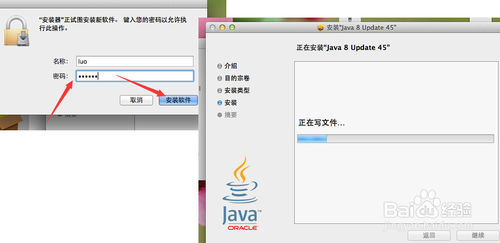Jdk10 Mac_jdk10 For Mac
Received quite a bit of traffic, and I felt that some of the information was outdated, and it became a little unclear after all the edits, so I’ve endeavoured to create a much easier to understand set of instructions. The instructions for installing the JDK (Java Development Kit) are a subset of the, because Oracle provides an installer for the JDK. Go to the and download the JDK installer. You should end up with a file named something similar to jdk-8u60-macosx-x64.dmg, but perhaps a newer version. Open the.dmg Disk Image and run the installer. Open Terminal. Edit the JDK’s newly installed Info.plist file to enable the included JRE to be used from the the command line, and from bundled applications: cd `ls -1d /Library/Java/JavaVirtualMachines/jdk1.8.jdk sort -rn -t -k 1.42 -k 2 head -1` sudo defaults write '`pwd`/Contents/Info.plist' JavaVM -dict-add 'JVMCapabilities' 'JNIBundledAppCommandLine' sudo chmod 0664 Contents/Info.plist sudo plutil -convert xml1 Contents/Info.plist The third line fixes a permissions issue create by using defaults write.
The fourth line is not required, but makes the file more user-friendly if you open it again in a text editor. Create a link to add backwards compatibility for some applications made for older Java versions: sudo mkdir -p Contents/Home/bundle/Libraries cd Contents/Home/bundle/Libraries sudo ln -s././jre/lib/server/libjvm.dylib libserver.dylib.
Optional: If you’re actually using the JDK for software development, you may want to set the JAVAHOME environment variable. The recommended way is to use /usr/libexec/javahome program, so I recommend setting JAVAHOME in your.bashprofile like suggests: echo 'export JAVAHOME= `/usr/libexec/javahome `' /.bashprofile chmod u+x /.bashprofile This will get the latest installed Java’s home directory by default, but check out man javahome for ways to easily get other Java home directories. You should be done now, so try and open the application. If it does not work, some applications require to be installed. You can have it installed without actually using it, however, it’s possible to trick the applications into thinking legacy Java 6 is installed, without actually doing so. If you’re running El Capitan, this is actually a little difficult now, because Apple added SIP (System Integrity Protection) to OS X.
I have written. If you’ve, or are not running El Capitan yet, you can trick some applications into thinking legacy Java 6 is installed by creating two folders with the following commands in Terminal: sudo mkdir -p /System/Library/Java/JavaVirtualMachines/1.6.0.jdk sudo mkdir -p /System/Library/Java/Support/Deploy.bundle Don’t forget to again after creating these directories. I think the recommended way to ship Java applications is to bundle the JRE with the application. The JDK is intended for application developers, so it doesn’t make sense to automatically add the ability to launch Java applications when you install it for development. There are many applications that use Java unbeknownst to the user because it is bundled in the application, and does not require the user to install Java on their computer. There are positives and negatives to this, but I won’t get into that.


Jdk 10 Mac Jdk 10 For Mac Pro
The part where I create links is because some older apps referenced a Java library file at a specific location, which was fine for older versions, but was not the “proper” way of doing it. When the specific path to the library changed, some older apps stopped working. Some apps that referenced Java “properly” still work without doing this step.
Oracle increments the version number when there are potentially application-breaking changes. There is no guarantee that apps that run on Java 6 will run on Java 7, let alone Java 8. It is up to the application developer to update their code if they wish to use the latest version of Java. It may have been nice of Oracle to add those links, to increase backwards compatibility, but it is not their responsibility, and in my opinion, should not be including them. Step 6 is user preference, and not something that should be done by the Java installer.
The reason for the last note is essentially “tricking” some apps into using the installed Java (version 8 in my blog post) when they are trying to use Java 6. The apps are saying “I need Java 6 to work, because I can’t guarantee that I will work with newer versions of Java, so please install Java 6.” The Java installer should not be doing this at all, nor should it even be touching the System directory. TL;DR: The issue is not with the Java installer, in my opinion.